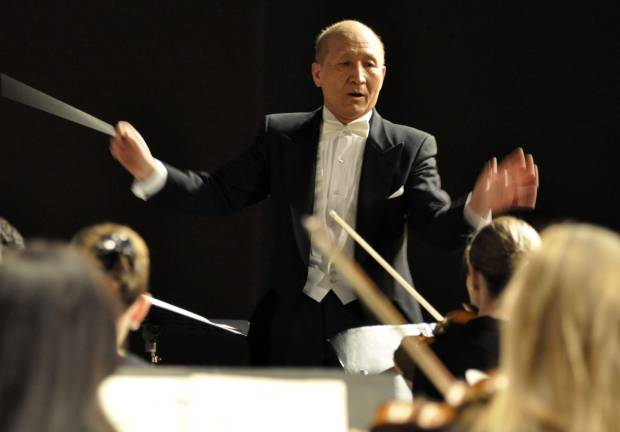The music returns

NEWBURGH — Woomyung Choe and the Greater Newburgh Symphony Orchestra will kick off the 2013-14 season on Saturday, Sept. 7, at Mount Saint Mary College with a compelling mix of music from Brahms, Tchaikovsky, Prokofiev and Rimsky-Korsakov.
The concert begins at 7:30 p.m. in the college’s Aquinas Hall. The Shacklett Preview at 6:30 p.m. is a pre-concert introduction to the evening’s music by Gordon Shacklett.
The evening’s program
The concert begins with “Academic Festival Overture, Opus 80” by Johannes Brahms. It was composed during the summer of 1880 as a musical “thank you” to the University of Breslau, which had awarded him an honorary doctorate. Brahms himself referred to the overture as “a very jolly potpourri of students’ songs á la Suppé,” Franz von Suppé being an Austrian composer of light operettas.
Irresistible and heart-wrenching, “Romeo and Juliet Overture-Fantasy” by Pyotr Ilyich Tchaikovsky follows. Shakespeare’s tragedy and Tchaikovsky’s tortured personal life collided to produce the first true expression of his genius as a composer. The passionate immediacy of the Overture-Fantasy was stimulated in part by a personal experience of a love affair gone bad. Recent research by Alexander Poznansky proposes that the amour was Eduard Zak at the time Romeo and Juliet was composed.
Sergei Prokofiev was a young man whose music scandalized the audiences he delighted in alienating. Such a background makes the creation of his Symphony No. 1, Opus 25 “Classical” all the more remarkable. In the summer of 1917, with the Russian Revolution beginning to explode around him, Prokofiev set to work on an experiment. He wanted to write a symphony without being seated at the piano and, in fact, this symphony was composed mostly during long walks in the woods outside St. Petersburg. The symphony, only 12 minutes long, has a classical order and style, enlivened at some points by Prokofiev’s characteristically pungent harmonies. The turmoil of Prokofiev’s country is nowhere depicted in these works. He had moved on and would not return to Russia for 20 years.
The evening concludes with a showpiece for the Greater Newburgh Symphony Orchestra musicians. “Capriccio Espagnol, Opus 34 (Spanish Caprice)” began when Nicolai Rimsky-Korsakov sketched out a Spanish-flavored fantasy for solo violin before completely revising it in 1887 for the entire orchestra. The piece is often lauded for its orchestration, which features a large percussion section and many special techniques and articulations. While the Capriccio has long been an audience favorite, it is also a very satisfying piece to play. Every section in the orchestra has a chance to shine, and there are many virtuoso solo passages.